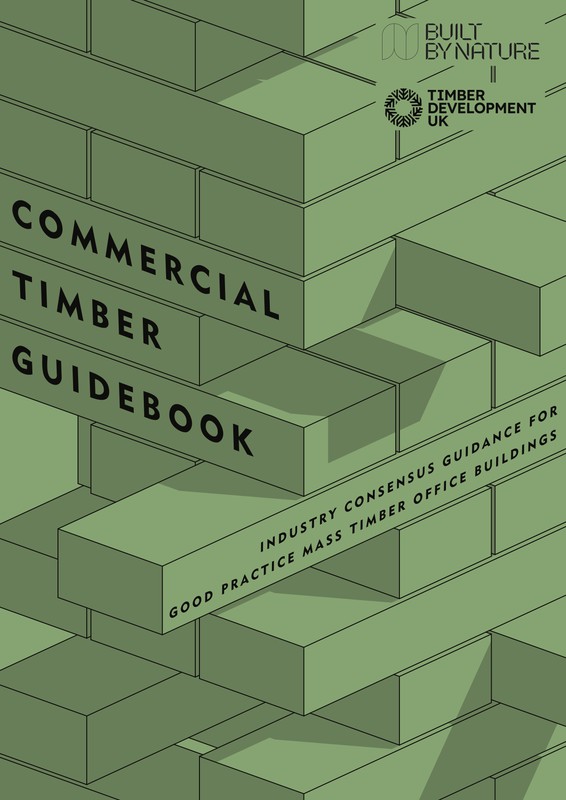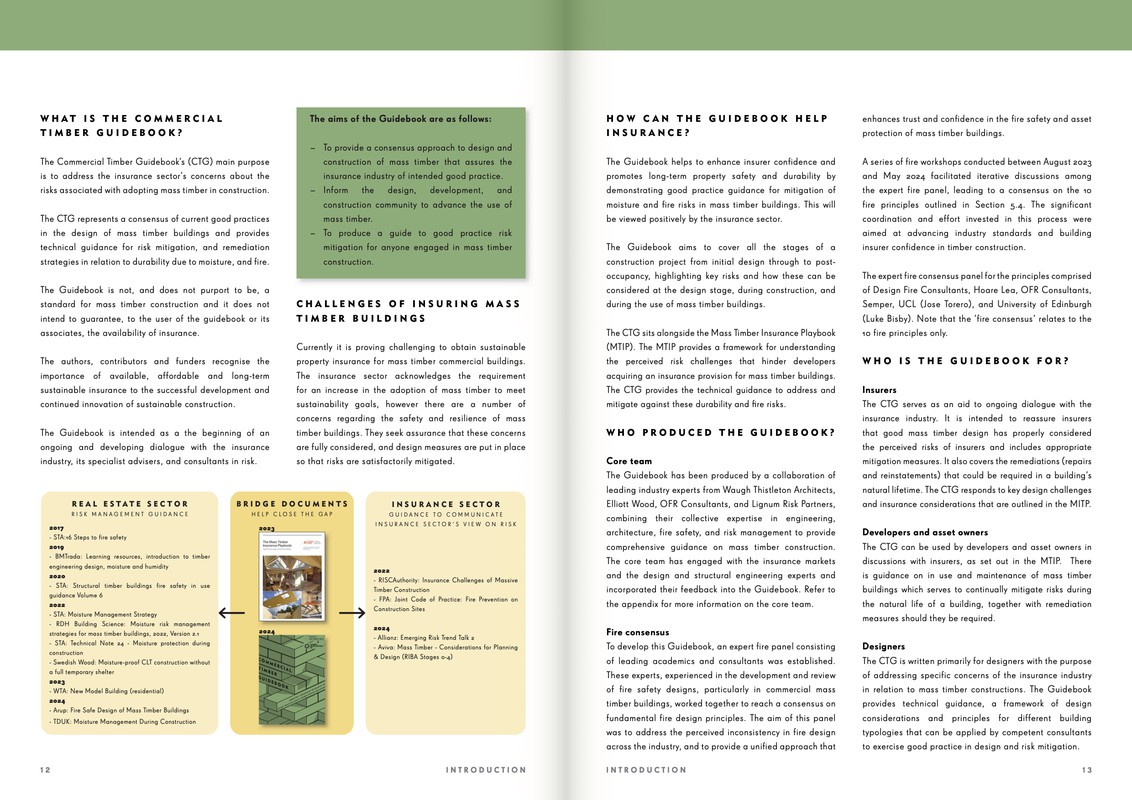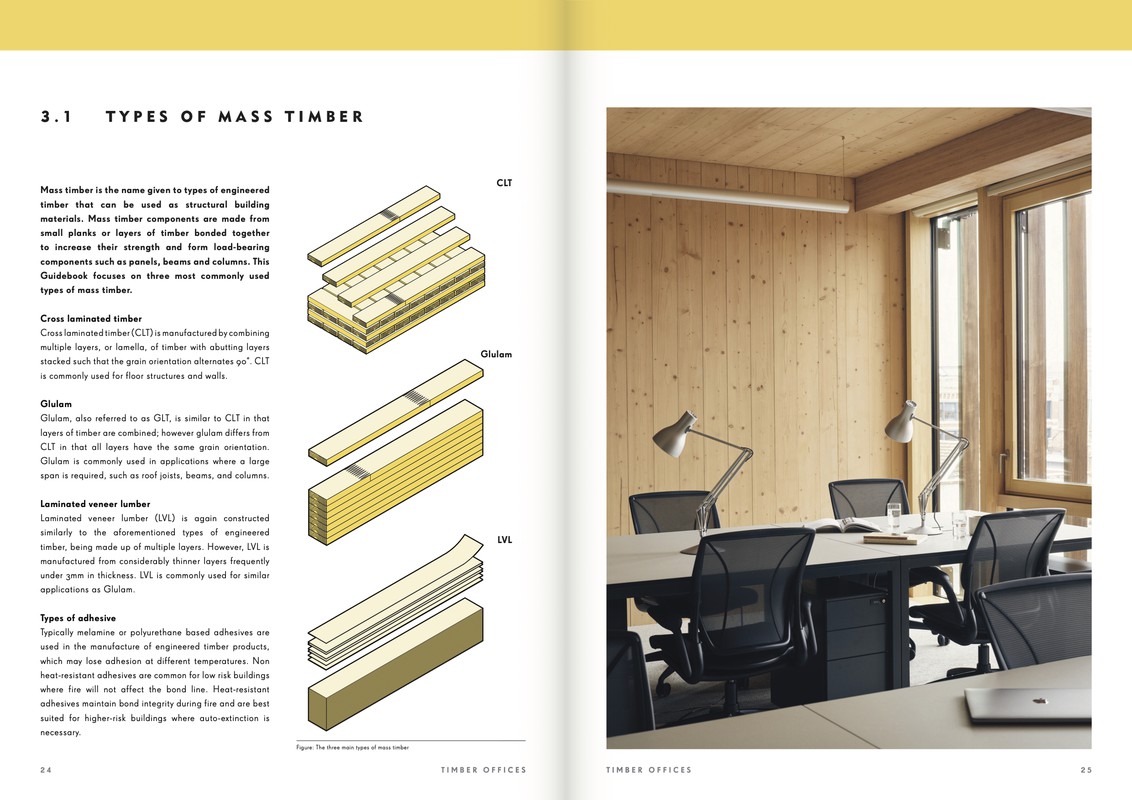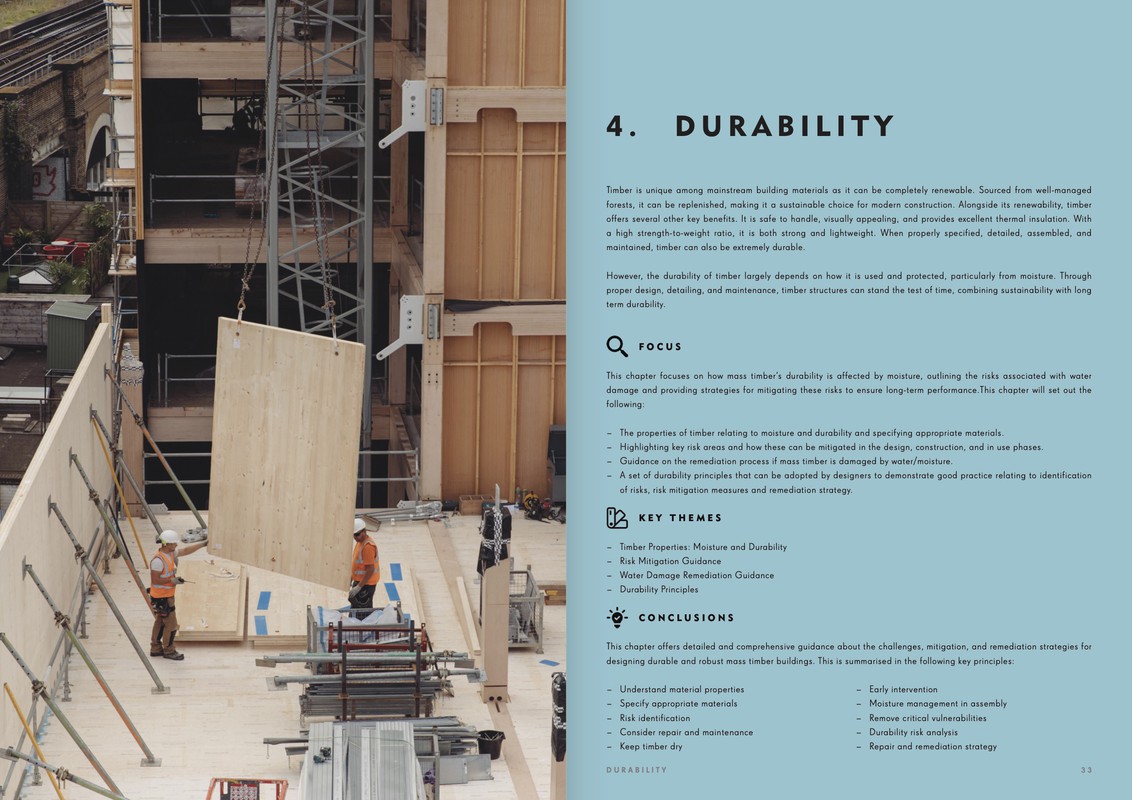The commercial timber guidebook has launched!
Aimed at insurers, asset owners, designers, and developers, the CTGB is a technical resource that addresses the insurance challenges and solutions for mass timber buildings.
The Commercial Timber Guidebook is a major collaboration between property developers, insurers, and technical experts to provide comprehensive guidance on building with wood.
The guide, which aims to promote the use of structural timber in office construction, represents a key step toward broader adoption of sustainable timber construction practices within the commercial building sector. Commercial buildings make up 16% of all new UK buildings, according to the Office for National Statistics (March 2023).
The initiative is spearheaded by Elliott Wood, Waugh Thistleton Architects and OFR Consultants, working with specialist insurance consultants Lignum Risk Partners to engage the wider sector. The project, kickstarted with a €200,000 grant from the Built by Nature network and fund, also attracted co-funding and support from major developers all seeking to overcome existing barriers to mass timber adoption.
The Guidebook aims to drive the adoption of timber by demonstrating both its technical viability and its insurability. The project team worked directly with architects, developers, and engineers to create a consensus of good practice on how to incorporate structural timber into new office buildings. For example, the Guidebook has input from the country’s leading fire engineers, resulting in unprecedented cross-industry consensus around how to achieve fire safety in timber office buildings of various typologies.
It is the latest addition to an inventory of practical knowledge, supported by Built by Nature. The network and grant funder has previously worked in partnership with industry leaders on a series of technical guides to promote the use of mass timber, including the City Handbook for Carbon Neutral Buildings; the New Model Building and the Mass Timber Insurance Playbook.
To amplify its impact, the Guidebook will be published by Timber Development UK and distributed across key industry networks, including the UK Green Building Council, the Better Buildings Partnership, and the Institution of Structural Engineers, ensuring wide-reaching influence and uptake across the sector.
To read the publication in full please refer to the TDUK website here.



